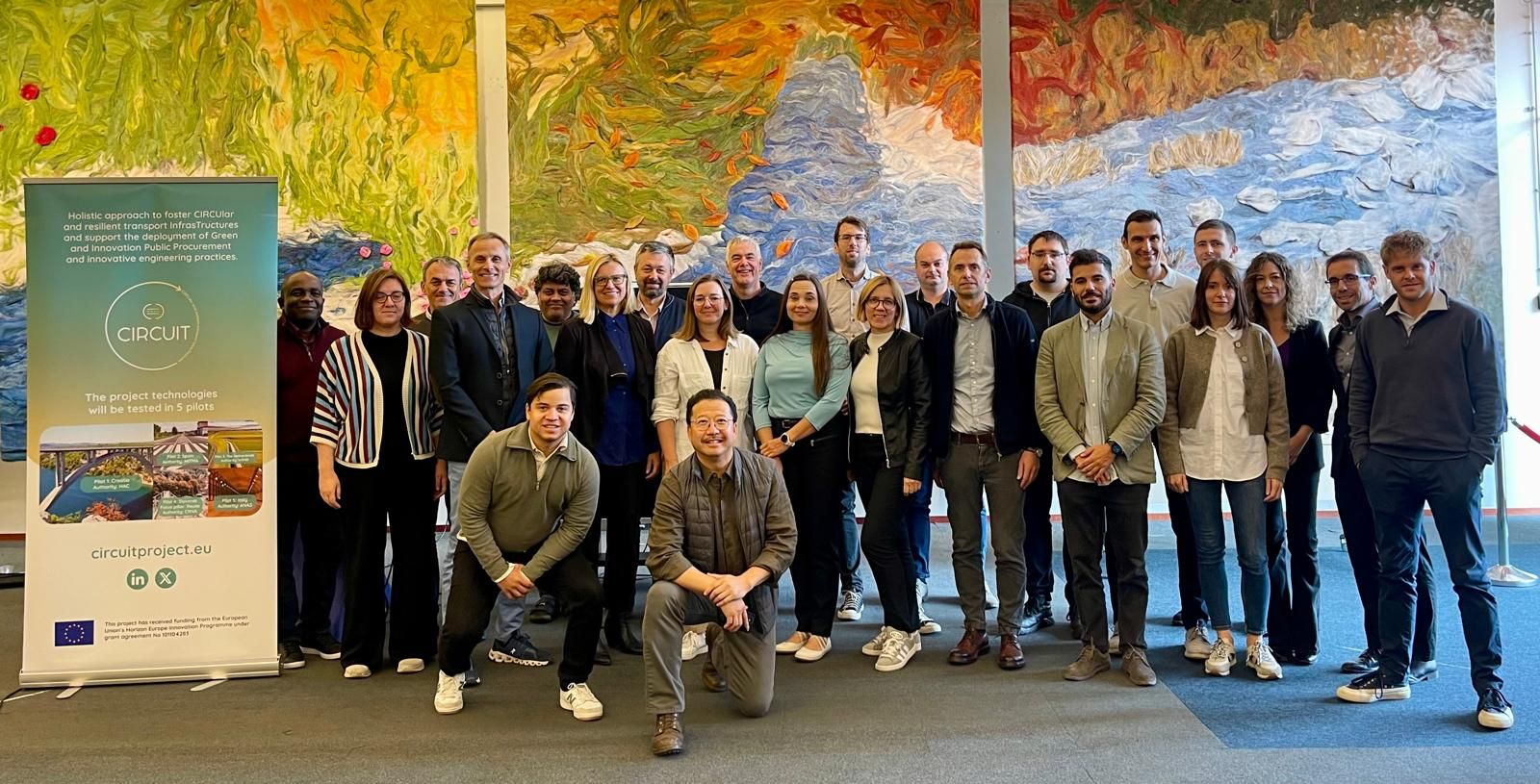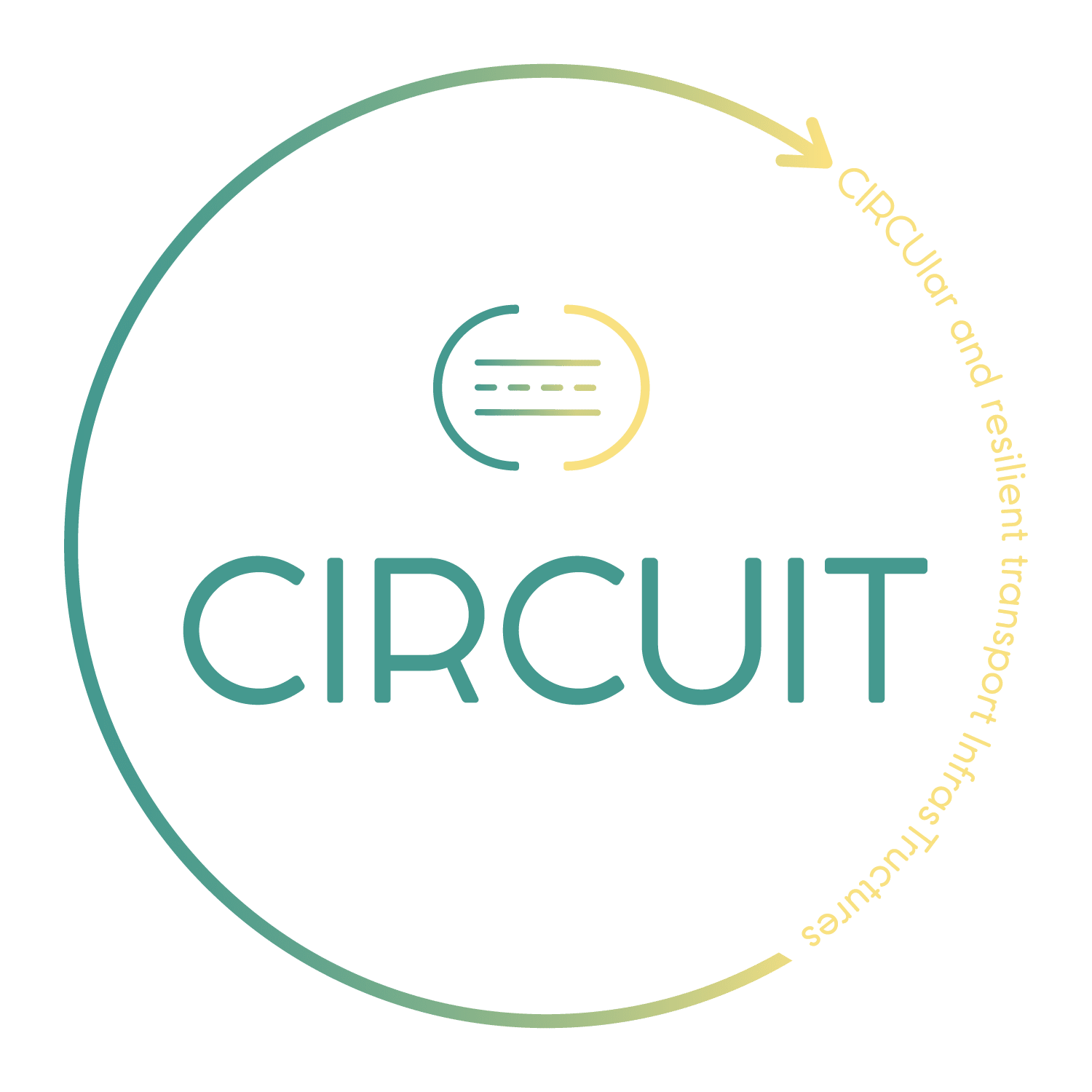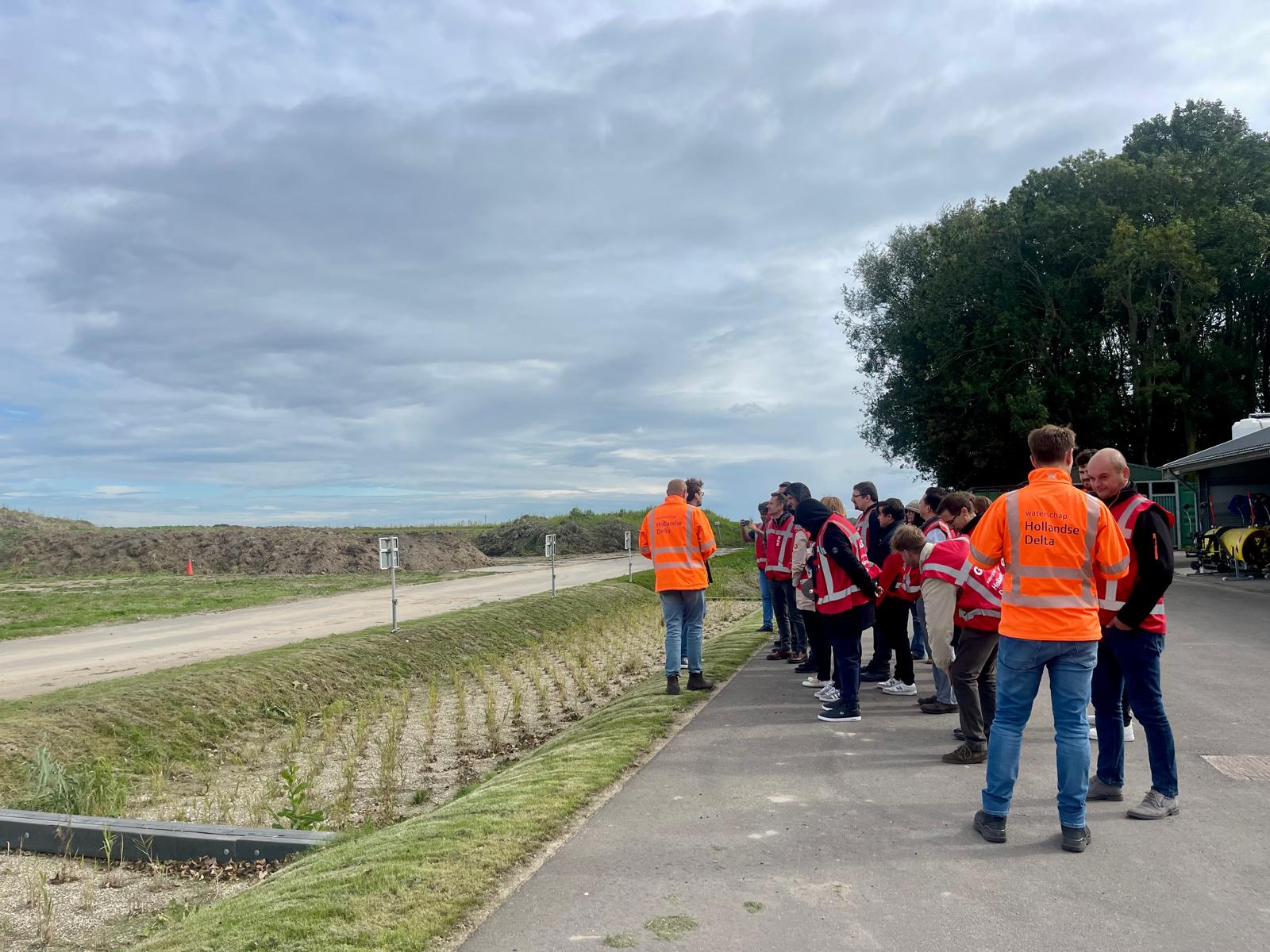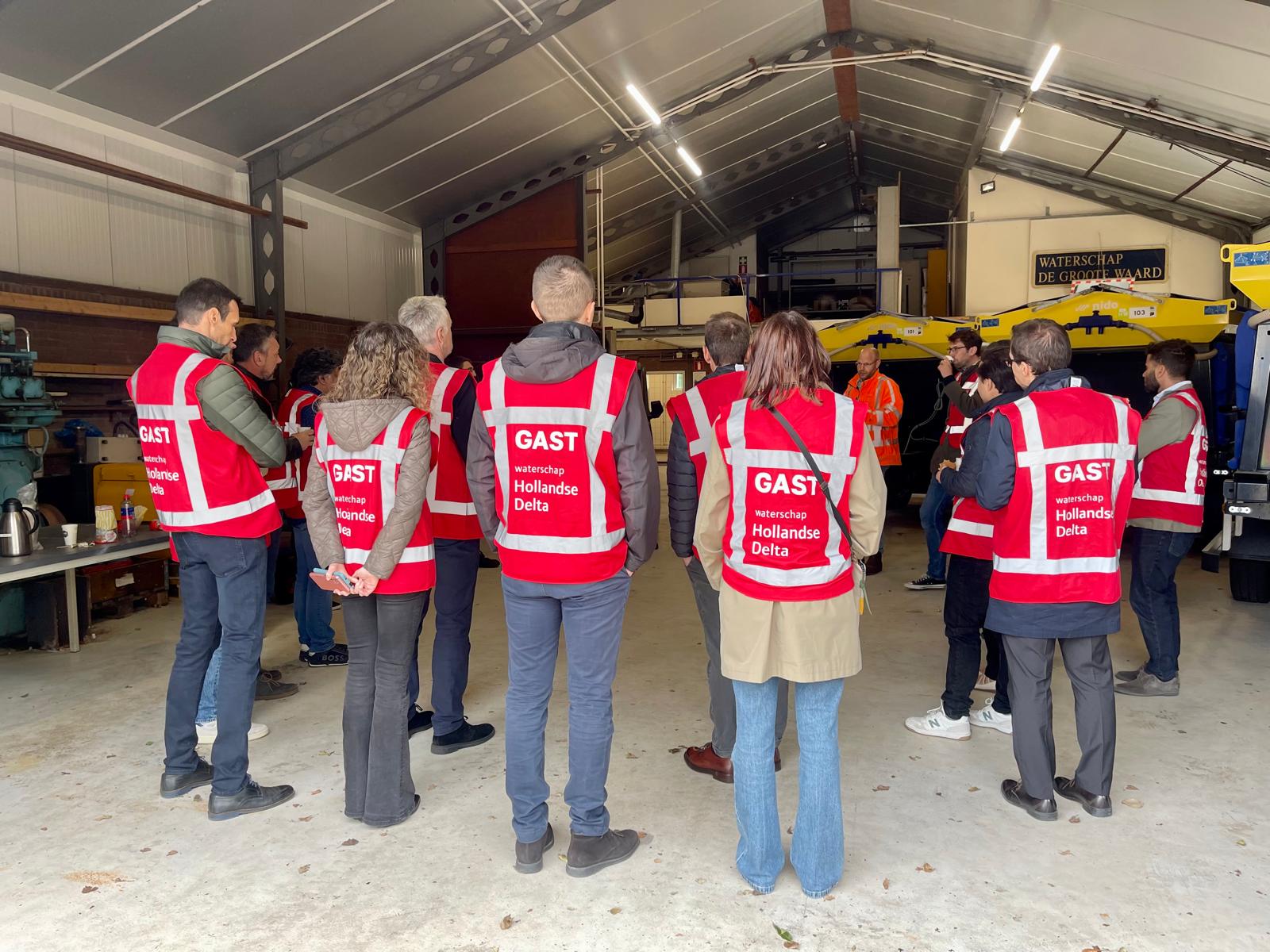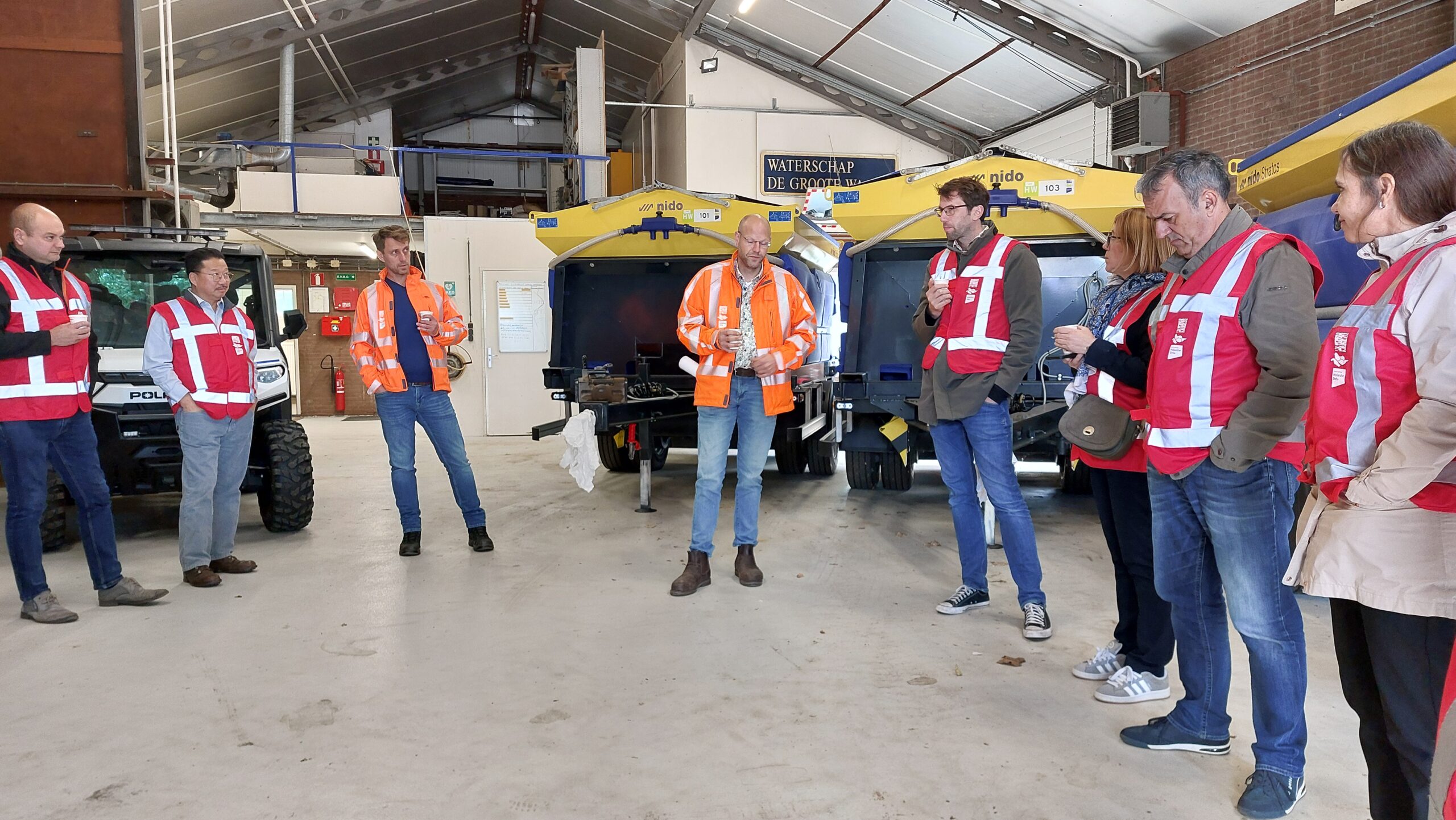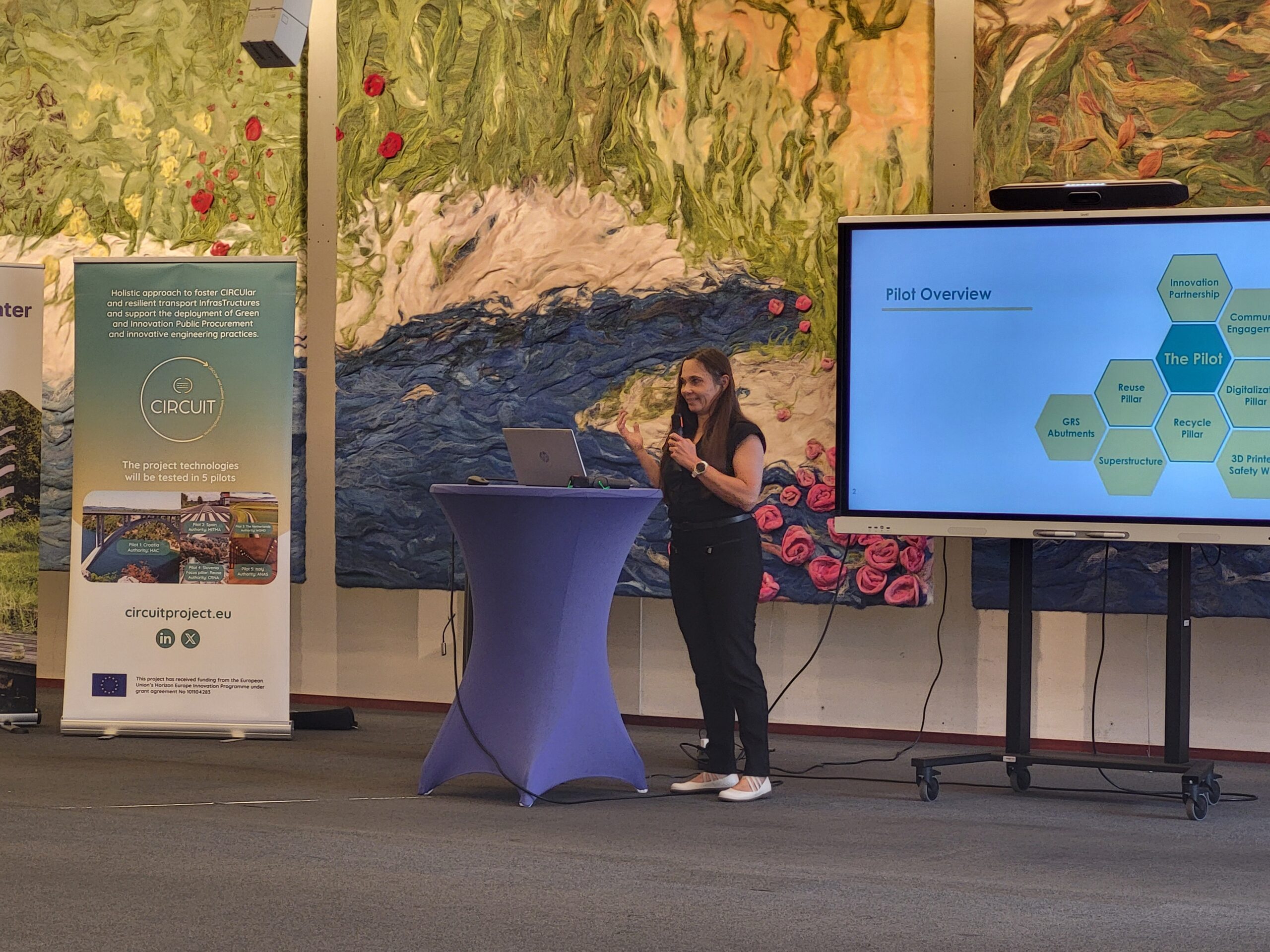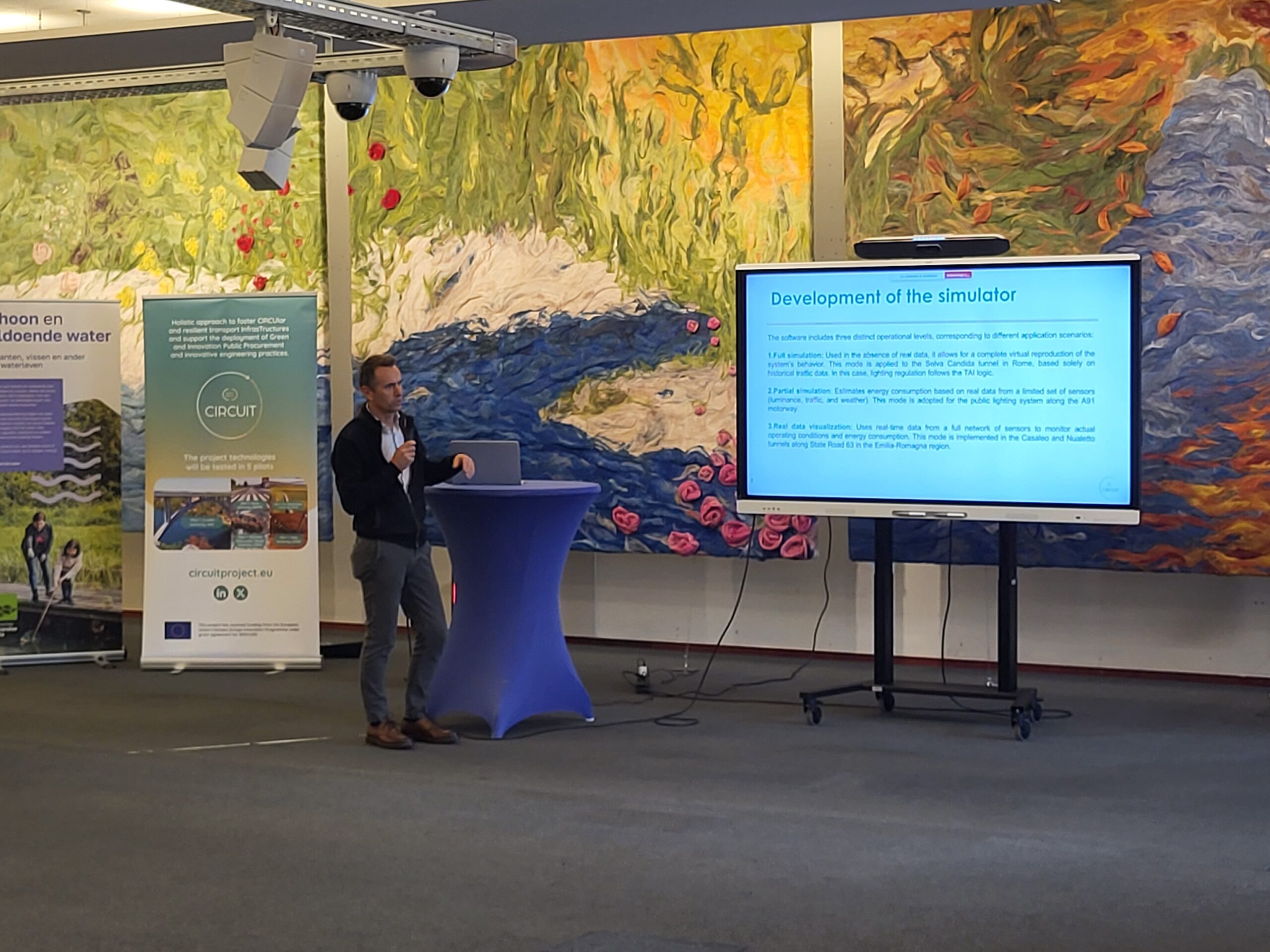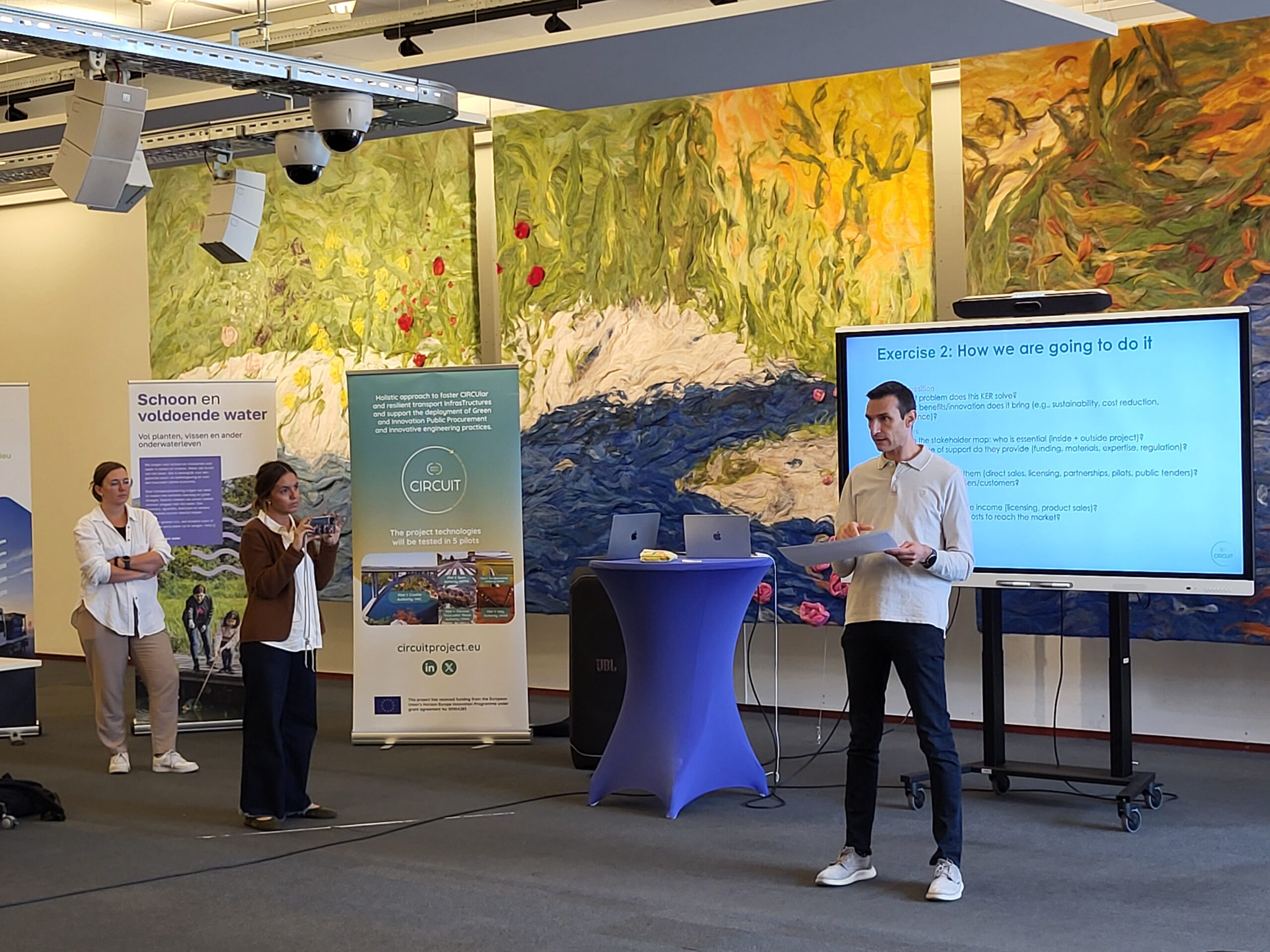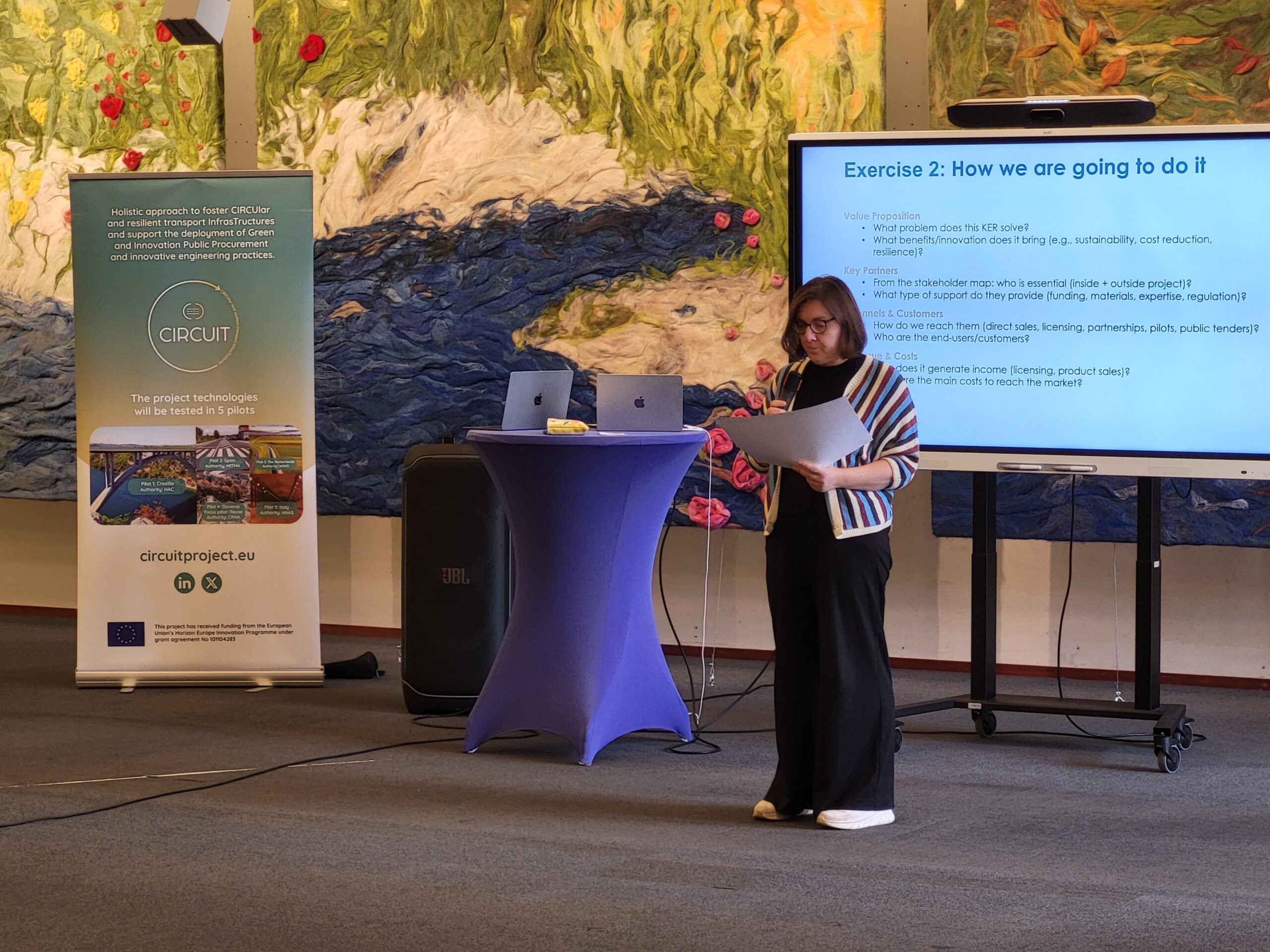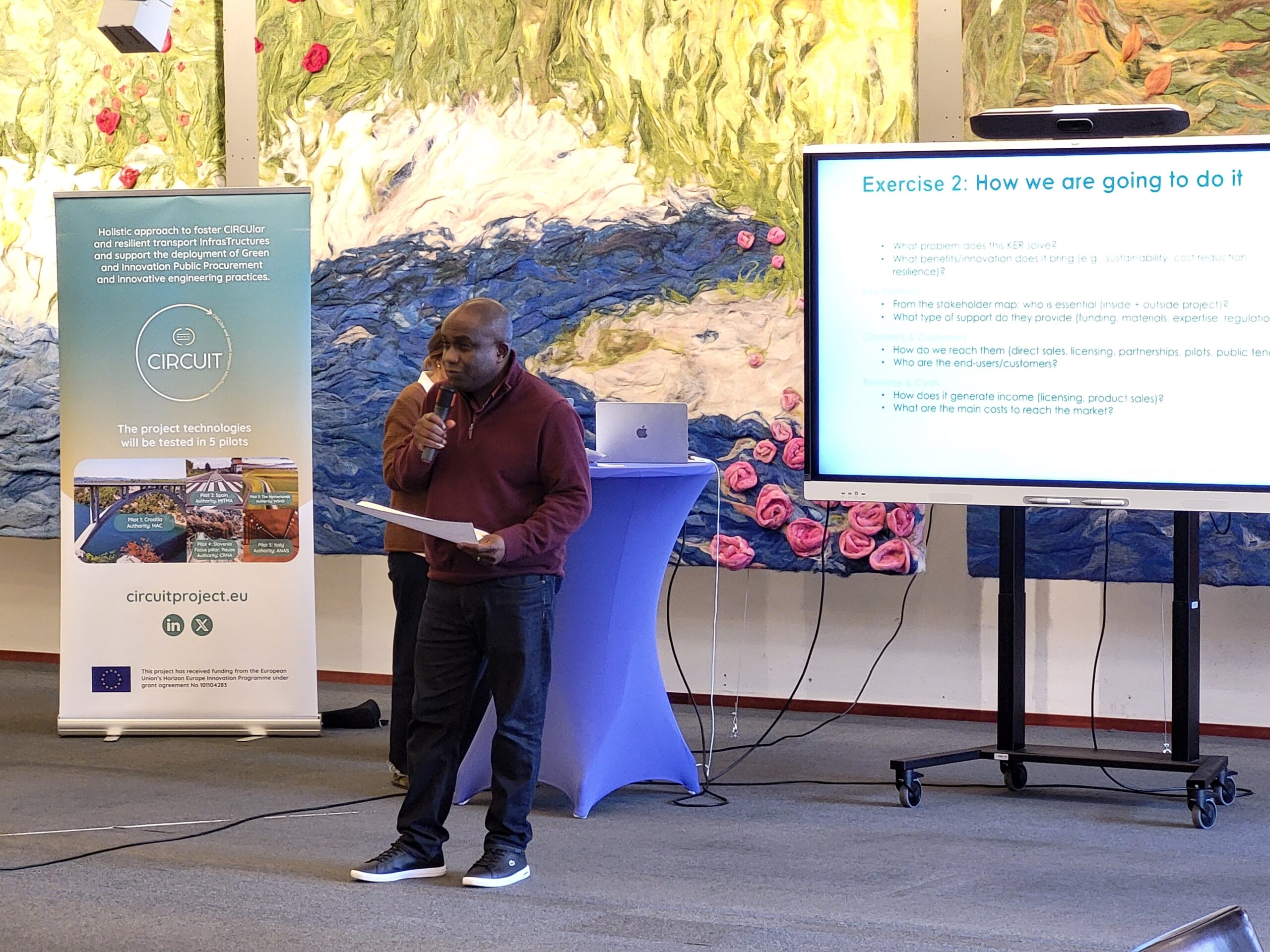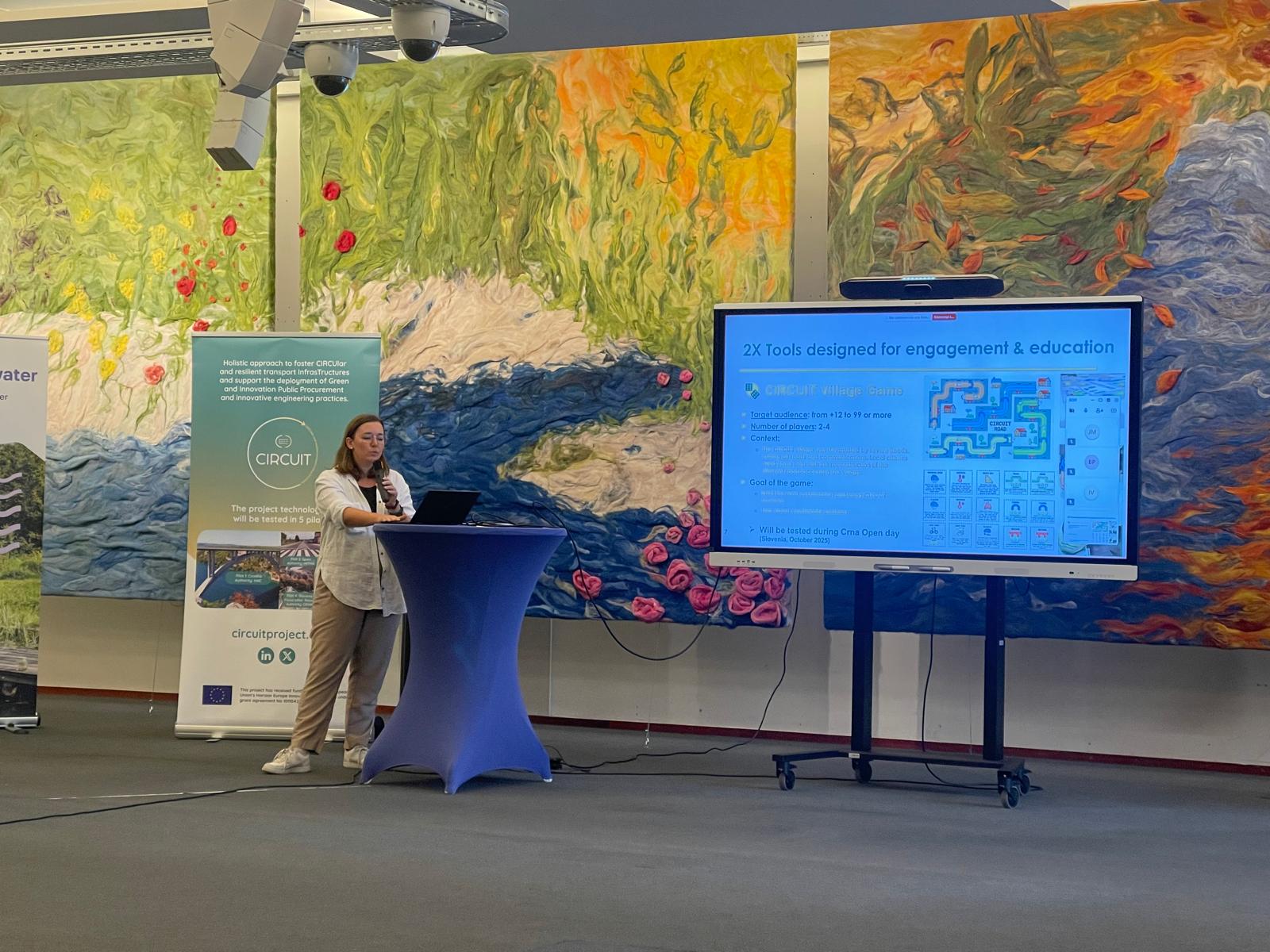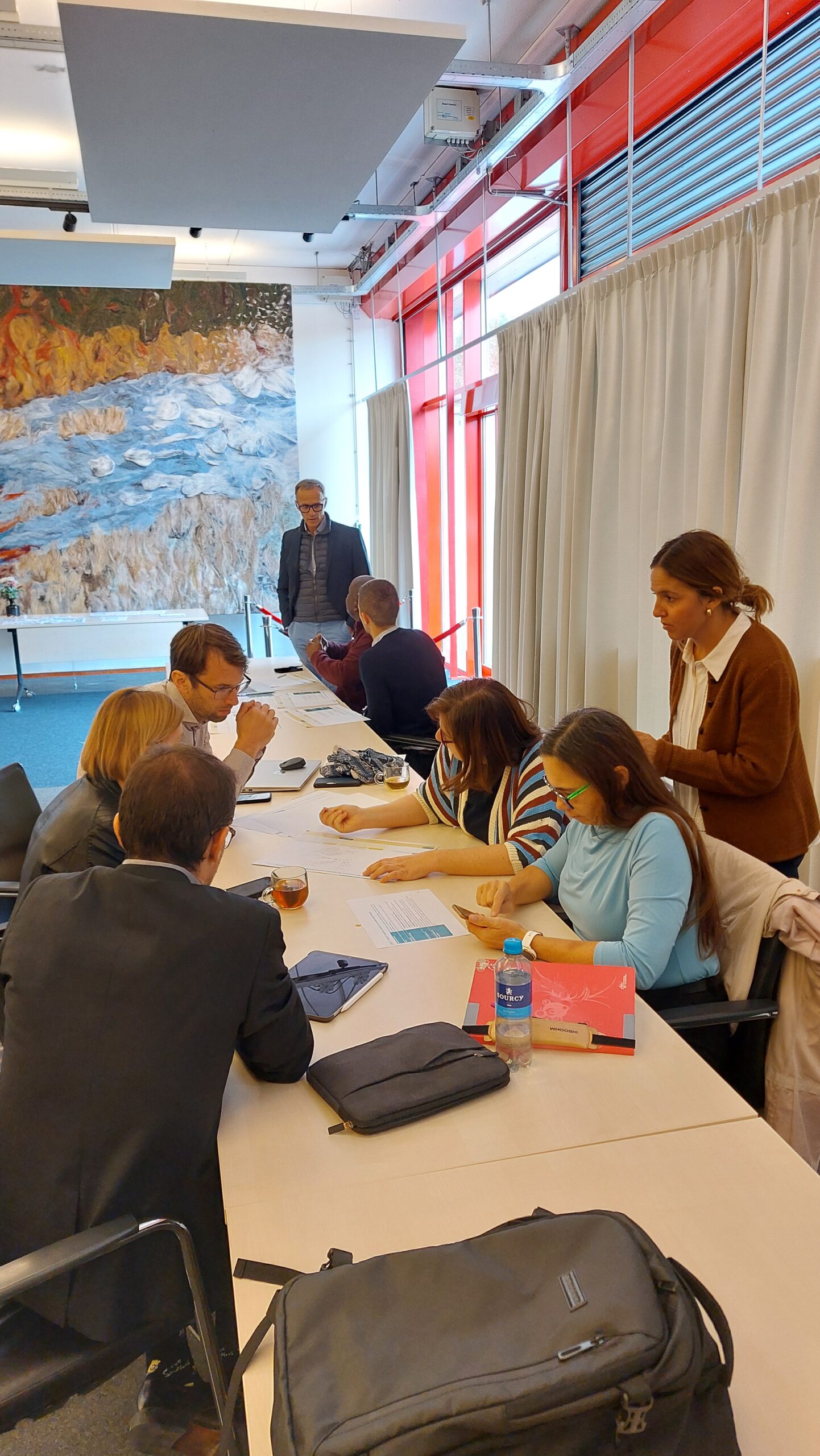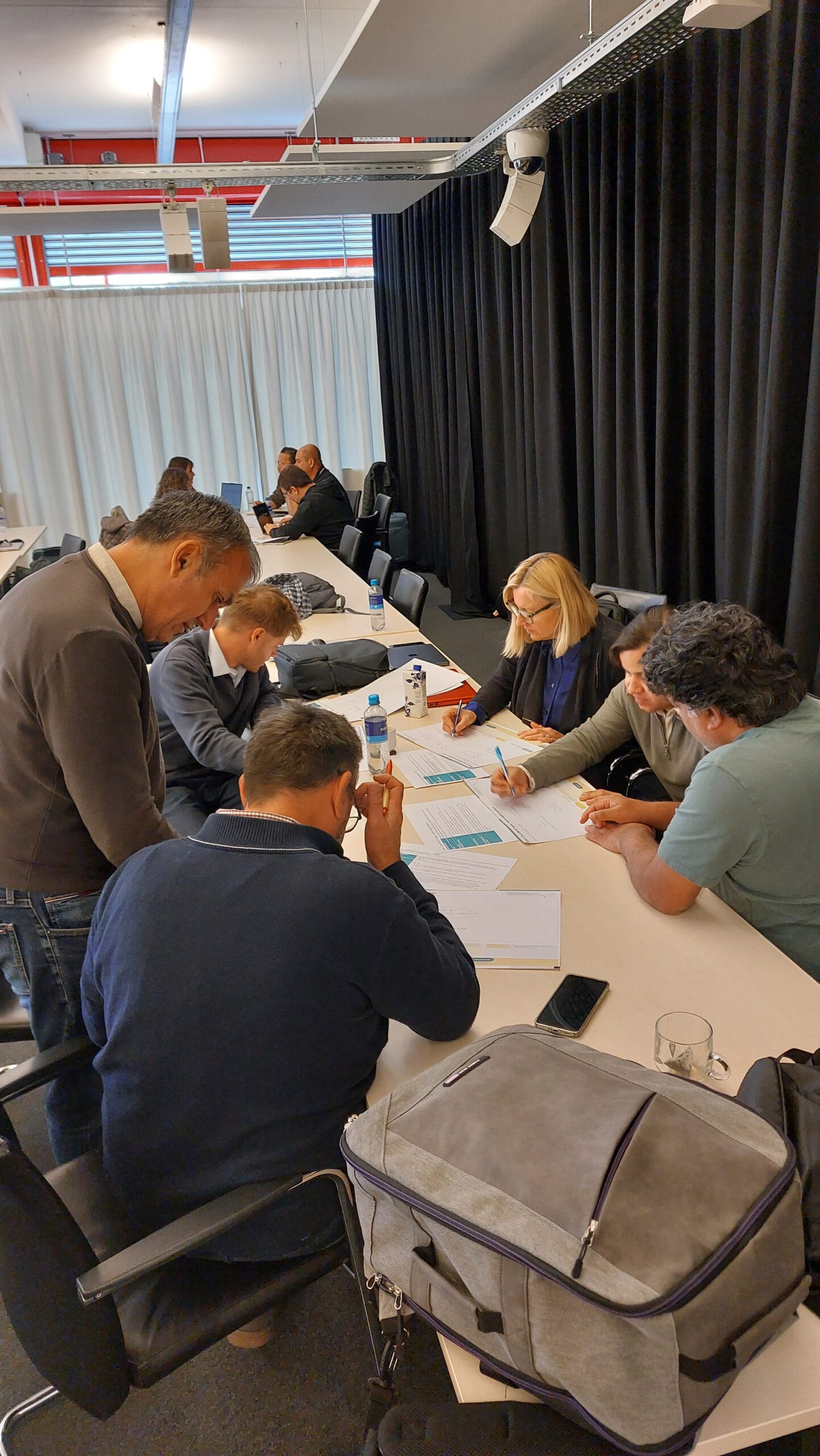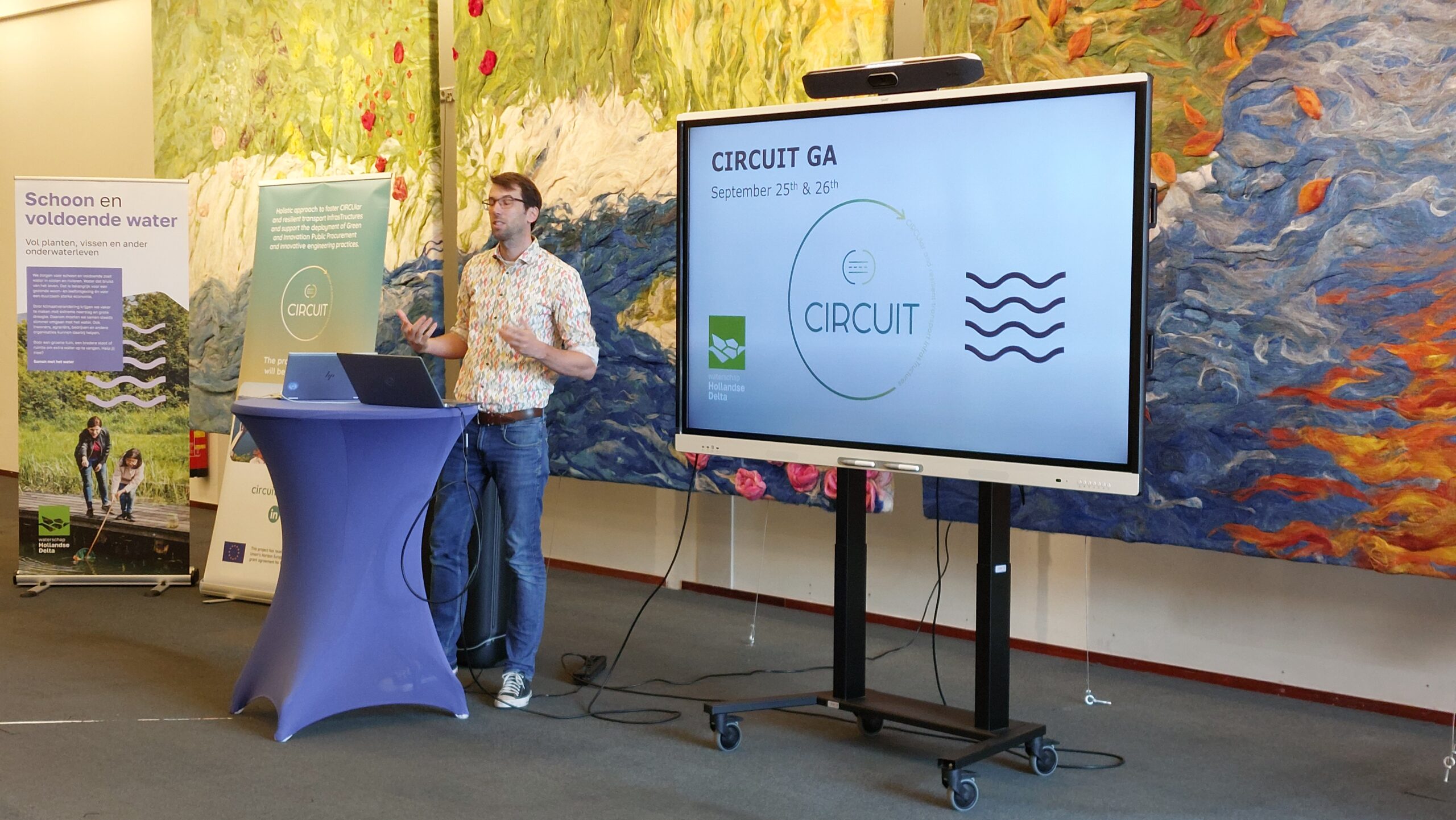The CIRCUIT team gathered for its sixth General Assembly in Ridderkerk (Netherlands) in September, 25-26, 2025. The meeting provided the opportunity to share internally the progress on the different work packages and to set the next steps for the project’s next phases. A workshop among participants was also held to explore business models and opportunities for the future exploitation of the project’s results, and a site visit hosted by the Waterschap Hollandse Delta (Hollandse Delta Water Board) offered a firsthand look at circularity in action within water management.

CIRCUIT so far
The project coordinator (FEHRL) highlighted that all the project tasks are running on time (WP7).
More specifically, the following results were shared with the consortium:
- Digital Platform and Solutions for Smart Mobility (WP2): Hector Posada from Digital Twin Technology (DTT) presented the current state of the platform, which now allows the incorporation of EPDs in Excel Format. The first prototype of the Supply Chain Matchmaking Tool was also intoduced. IECA debriefed the consortium on the state of the art on the development of a Digital Product Passport (DPP) and the Univeristy of Cantabria on the progresses carried on in the Spanish pilot.
- Green Innovative and Procurement Models (WP4): Louise Souquet (RightClick) updated the partners on the activities aimed at raising stakeholders’ engagement, such as the realisation of the CIRCUIT board game (aimed also at involving young generations) and the upcoming open day in Črna na Koroškem (Slovenia). Irina Stipanovic from IPK shared insights on Task 4.3 (“Data utilization models”), which results will be included in the report “Novel Governance Models and Innovation and GPP Guidelines, which will be released in May 2026. Luca Lottero (ERF) introduced the work on a new survey aimed at investigating criteria, enablers and barriers to IGPP, which results will be included in deliverable 4.2 of CIRCUIT (Novel Govenance Models and Innovation and GPP Guidelines).
- Guidelines, Replication, Dissemination and Exploitation (WP6): RightClick, ERF and FEHRL (the leading partners in the WP6 work package) highligted that all the tasks are regularly ongoing and the KPIs met, but the importance of an active communication on social media to make the project more visible was emphasized. During the second Exploitation Workshop, partners drafted a stakeholders’ map for each of the 19 CIRCUIT KERs and then realized a first draft of a Business Model mini-canva. Results of the activity were then shared with the consortium.
Towards practical implementation
The main takeaway from the GA is that CIRCUIT is entering a phase where its results will become increasingly visible, underscoring the need for effective communication.
The GA was the occasion to update the consortium on the progress in the five CIRCUIT pilots:
- Croatia (Pilot 1): high resolution 3D mesh and point cloud were obtained for Krpani Bridge; while are still to be obtained for geotechnical structures and road section, while the point data cloud are produced and included in the CIRCUIT digital platform;
- Spain (Pilot 2): light and ventilation cases will be deployed in a new location (Lantueno tunnel), while three innovative asphalt products have been successfully validated and will be made available for testing on roads;
- The Netherlands (Pilot 3): tests on mixtures (CH, CL + cement/fly ash/slag) have been finalized , while it was decided that 2 by-products (50% wood ash/50% fly ash, and 100% wood ash) can be used in hydraulic binders in the Oostmolendijk region;
- Slovenia (Pilot 4): large scale tests on concrete T-beams are finalized, while the data analysis is ongoing. Some delays on the documentation is due to the change of the pilot location, but it will be released by October 2025. Concrete formulation and design of modular prefabricated slabs are finalized, and also the variant of 3D printed wall was developed;
- Italy (Pilot 5): the implementation of the FAI system has been redirected to the Nualeto and Casaleo tunnels, while a simulation approach will be adopted for the A91 motorway. This decision has led to the development of a more versatile, scalable, and flexible application suitable for different infrastructure types and varying levels of data integration. Recent activities were aimed at the development of an innovative simulation platform.
